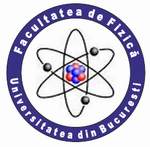| |
 |
UNIVERSITY OF BUCHAREST
FACULTY OF PHYSICS Guest
2025-10-05 22:31 |
 |
|
|
|
Conference: Bucharest University Faculty of Physics 2025 Meeting
Section: Biophysics; Medical Physics
Title:
Optimizing the management of respiratory motion in stereotactic radiotherapy for lung cancer: Dosimetric advantages of 'breath-hold' techniques compared to 4D CT
Authors:
Maria-Cristiana RĂDULESCU, Claudia-Gabriela CHILOM, Mihai Daniel SUDITU
Affiliation:
1)University of Bucharest, Faculty of Physics, 405 Atomistilor Street, P.O. Box MG-11, 077125 Magurele, Romania
2) Amethyst Centre Bucharest, Strada Odăii 42, 075100 Otopeni, Romania
E-mail
cristiana4331@gmail.com
Keywords:
Stereotactic radiotherapy, lung cancer,
Abstract:
Stereotactic body radiotherapy (SBRT) is a highly effective treatment for early-stage lung cancer and pulmonary metastases, delivering high radiation doses in a few fractions with precision. However, respiratory-induced tumor motion presents a significant challenge in maintaining accurate dose delivery while sparing healthy tissues. This paper explores motion management strategies, with a focus on dosimetric comparisons between breath-hold techniques and 4D computed tomography (4D CT) in lung SBRT. Approaches such as abdominal compression, internal target volume (ITV) definition via 4D CT imaging, respiratory gating, real-time tumor tracking, and the use of image-guided radiotherapy (IGRT) are reviewed. The analysis includes a dosimetric comparison of the breath-hold (BH) technique versus free breathing (FB), both based on 4D CT planning. A total dose of 50 Gy in 5 fractions was prescribed under both techniques for each patient. Treatment plans were evaluated based on target volume coverage and sparing of organs at risk (OARs), including lungs, heart, spinal cord, and esophagus. The BH technique demonstrated a significant reduction in irradiated volume and improved dose conformity compared to FB. ITV volumes in BH were notably smaller due to minimized respiratory motion, resulting in reduced PTVs and enhanced OAR sparing. These findings highlight the dosimetric advantages of BH in lung SBRT, especially in cases with pronounced respiratory motion, and support its integration into radiotherapy planning to enhance precision and reduce toxicity risks.
References:
“Lung cancer statistics | Cancer Research UK.” https://www.cancerresearchuk.org/health-professional/cancer-statistics/statistics-by-cancer-type/lung-cancer?utm_source=chatgpt.com (accessed Feb. 21, 2025).
“Radioterapia stereotactică, una dintre cele mai avansate metode de radioterapie, disponibilă pentru pacienții Asociației OncoHelp – Centrul de Oncologie OncoHelp - Ziua de Vest.” https://www.ziuadevest.ro/radioterapia-stereotactica-una-dintre-cele-mai-avansate-metode-de-radioterapie-disponibila-pentru-pacientii-asociatiei-oncohelp-centrul-de-oncologie-oncohelp/ (accessed Feb. 08, 2025).
F. Cmrečak, I. Andrašek, M. S. Mekić, M. Ravlić, and L. Beketić-Orešković, “Modern radiotherapy techniques,” Libr. Oncol., vol. 47, no. 2–3, pp. 91–97, 2019, doi: 10.20471/LO.2019.47.02-03.17.
D. A. Low, “Dosimetry challenges and opportunities in modern radiation therapy,” J. Phys. Conf. Ser., vol. 1305, no. 1, 2019, doi: 10.1088/1742-6596/1305/1/012001.
|
|
|
|

